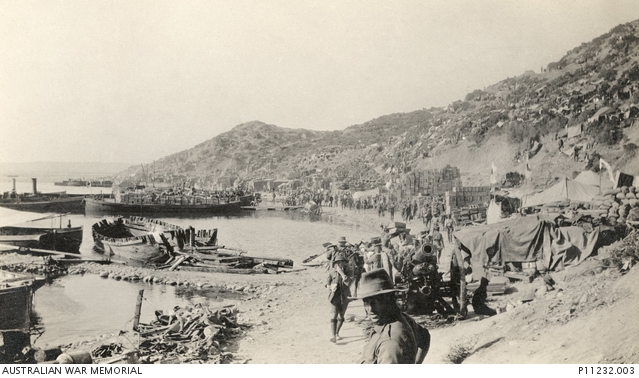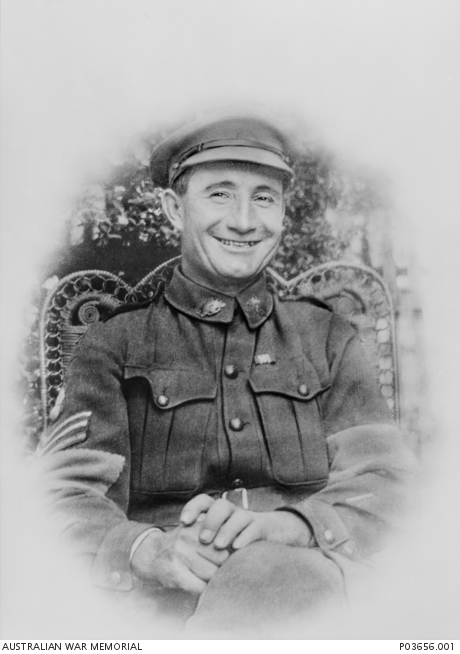Did you know that a man believed to be the first Canberran to set foot on Gallipoli in the early hours of 25 April 1915, was twice awarded the Military Medal for Gallantry during WWI and went on to become one of the first soldier-settlers in the ACT? In honour of Anzac Day, Canberra Daily is re-publishing (online only) the cover story from our 23 April 2015 edition, which commemorated the centenary of the ANZAC landing at Gallipoli in the early hours of 25 April 1915. The original article, re-published below, was written by CW journalist Allison Turnbull (nee Redman).

Barely one year old when Australia was plunged into conflict, the nation’s fledgling capital still had a role to play during the First World War.
While the area was still mainly pastoral, the big centre was Duntroon, which, according to the Australian War Memorial, accepted its first intake of cadets on 27 June 1911.
A senior historian at the Australian War Memorial (AWM), Peter Burness, said Duntroon was originally set up to “provide administrators and instructors for the militia, not for officers to lead professionally”.
When the war began, Australia’s military forces were mostly part-time militia for home defence and couldn’t be sent to serve overseas. It was realised that a separate, all-volunteer force would need to be raised for overseas service, which became the Australian Imperial Force.
“The senior class at Duntroon were quickly made available for the Australian Imperial Force and classes below with accelerated training,” Mr Burness said. “It wasn’t the boom time for Duntroon. It had to send its young cadets off to the war and some of the senior officers and trainers. They were drained from providing officers to the war.”
Mr Burness said roughly 150 Duntroon cadets went off to war with about 40 killed; this includes Lieutenant Penistan Patterson, who the AWM lists as the first graduate of the Royal Military College to die on active service. Patterson Hall on the Duntroon campus is named in his honour.
According to the AWM website, Patterson joined the 12th Battalion, where he was made a platoon commander.
“On 25 April 1915, the 12th Battalion landed on Gallipoli under the cover of darkness … from a point north of Anzac Cove, Lieutenant Penistan Patterson immediately led his men in the attempt to take vital ground at what would later be called Walker’s Ridge. The platoon was under constant rifle, machine-gun and shrapnel fire. Patterson himself was killed later that day, and was mentioned in despatches for his conspicuous gallantry in leading his men under heavy fire.”
This year [2015], Saturday 25 April marks the 100th Anniversary of the landing of ANZAC troops at Gallipoli.

According to the AWM, Ernest Murray (pictured) is thought to be the first Canberran to land on Gallipoli. He was part of the first landing party on 25 April 1915 and “later while serving on the Western Front, he was mentioned in despatches and twice awarded the Military Medal for Gallantry”.
After the war, the AWM records show that Murray became one of the first soldier-settlers in Canberra. He died in 1935 and is buried at St John’s churchyard, Reid ACT.
While Gallipoli is an important event in the First World War, Mr Burness said France and Belgium were where most Australians served and ultimately died.
“The Western Front was where the main war was being fought and we had a big role in that,” he said.
The ideas for the AWM was also formed during the First World War with Charles Bean, Australia’s official war correspondent, the driving force.
In 1917, a unit was created – the Australian War Records Section – which collected war relics and records.
“In 1918, men were going into battle with labels to label things and when they captured enemy guns would paint on who capture it … it’s a very good indication of how important what they thought they were doing was,” Mr Burness said. “They saw it as creating history for a young nation.”
The AWM opening in 1941 and Mr Burness said the delay in opening the institution was due to Australian advancement being put back decades by the war.
“We were a very young and progressive nation at the time war broke out and then we had to face great emotional strain, strain of war and loss of men and the situation shifted. People came back having to readjust to a changed world and not long after that was the Depression,” he said.
Follow-up
Immediately following publication of this story in Canberra Daily on 23 April 2015, one of Sgt Ernest Murray’s granddaughters, Chris Murray, contacted our office to say the property ‘Kurrumbene’ was still owned by the family today (2015), where four generations of family live together. In total (as at 30 April 2015), five generations had lived and farmed the land.
Chris said her father Barry, who passed away in July 2014, ran a dairy on the property, which was also used for grazing sheep and cutting hay. In 2015, Sgt Murray’s descendants were still grazing sheep and using the land for horticulture.
“We think this is pretty special as we don’t know of any other soldier settlement lease still owned and farmed by the same family,” Chris said at the time.
The property was also home to a Gallipoli Pine, given to the family by the Yarralumla Nursery.


